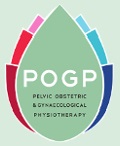I think it’s such a shame when I treat women who’ve spent months using an electrical stimulator (elec stim) in the hope it will stop them leaking, when they’d have done so much better by simply doing pelvic floor muscle exercises correctly. Sometimes they’ve gone out and bought the machine themselves (when they didn’t need to). Other times, unfortunately, they’ve been given it, but don’t understand its role in their treatment.
I genuinely admire anyone who’s prepared to spend 20 minutes a day (if not more) using a vaginal probe and elec stim in an attempt to solve their problems with their waterworks. It shows real commitment. I just wish they knew that if they actually learnt how to do their pelvic floor muscle exercises correctly and then did them – without relying on a machine to do it for them – they’re much more likely to see an improvement in their symptoms. Especially if they’re given the right advice about how to use their pelvic floor muscles functionally.
I speak from clinical experience. I see a lot of women who can’t believe how well they’ve done once they’ve stopped relying on elec stim to do it for them.
Electrical stimulation has its place. It’s good for women who have extremely weak pelvic floor muscles (to get them going) or who don’t know how to tighten them or struggle to locate them. However, if you can squeeze your pelvic floor muscles, you’re far better off doing daily pelvic floor exercises in a way which strengthens them. (It’s no good just doing the odd squeeze when you’re stopped at traffic lights: you need to work your pelvic floor by doing regular sets of exercises.) Your pelvic floor muscles can then work at a higher level when you need to use them functionally. This is where women’s health physiotherapy comes in. We understand how muscles work and specialise in training women how to strengthen their pelvic floor muscles so that they can use them more effectively.
Which makes me think that my next blog will be about the number of women who don’t do their exercises correctly…
Don’t give up! If you don’t know what you’re doing or you’d like to talk about anything written here, please contact me below. I’m happy to answer any queries and/or discuss treatment options with you. Alternatively, see a women’s health physiotherapist in your area.



